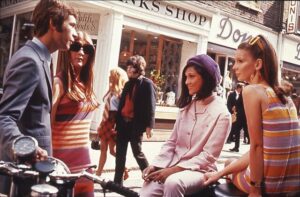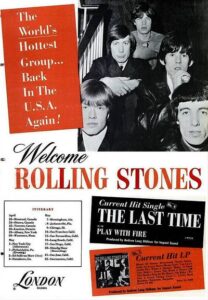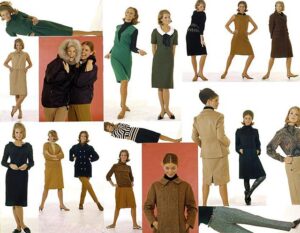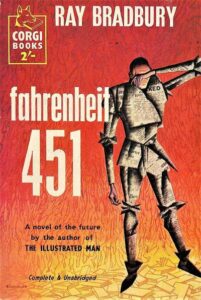The Swinging Sixties: When London was the Capital of Cool
Date post added: 26th June 2024
“If you can remember anything about the sixties, you weren’t really there.”
For those of you who were there but can’t remember it, and those who weren’t there but have heard that you should’ve been, we’re stepping back into 60s London. What made it swinging, cool and hip? Was it really a radically different time?
All eyes were on 1960s London – the epicentre of a whole new scene. Music, fashion, film and art all took on a progressive new style. And this thing called a teenager emerged to take centre stage.
Zip up those go-go boots and get ready to twist and shout your way down Carnaby Street, as we step back into Swinging 60s London.
Why do they call it the Swinging 60s?
The term “Swinging Sixties” didn’t come from London or even Britain. It was first used in an American Time magazine article by Piri Halasz – “London: the Swinging City” (Time, 15 April 1966).
In the article, Halasz wrote that every decade has had its city. Paris in the twenties, Berlin in the thirties, New York in the forties and Rome’s ‘la dolce vita’ in the fifties. But the sixties were all about London, “a city steeped in tradition, seized by change, liberated by affluence.” The Union Jack became a symbol of pop art worldwide.
Whilst we tend to think of the entire sixties decade as this boom time for change and new beginnings, it didn’t really get into full swing (‘scuse the pun) until the mid-60s. And the ‘Swinging Sixties’ term only emerged in 1966.
Hear the stories in their colourful and explicit glory on our London in the Swinging 60s walk
Why were The Swinging Sixties a defining decade for Britain?
After grey years of war and austerity in 1940s and 50s Britain, the 1960s sprung to life in full blown technicolour. It was a time of change – economic, cultural and social change – or as some felt, a time of revolution.
There were two significant factors of the time that created huge impact – youth and money. And aren’t we all still craving more of both?
The post-war baby boom in the 1950s meant the urban population was younger than it had been since Roman times. A staggering 40% of the British population was under 25 by the mid-60s.
They had money too. Across the UK, wages outstripped the cost of living by a whopping 183%. In London it would’ve been higher still.
This heady mix of youth and affluence contributed to exciting new styles in fashion, music, art and wider culture. Bye bye, prim and proper. Goodbye gloom and doom. It was time for colour, pattern, vibrant design and experimentation.
Harold Wilson became Prime Minister in 1964 and remained in post until 1970. After years of Conservative government, Labour took power. They shifted focus onto social inclusivity, and made significant reforms in that area from the legalisation of abortion to the decriminalisation of homosexuality.
The social change
This Golden Age of affluence was a driving force for social change. People had more money, giving them new opportunities. For the first time, middle and working class families had choices. More kids went to university or had enough income to spend on fun activities. They weren’t rooted to the same spot as many before had been and social mobility was a definite possibility.
As the decade progressed, class boundaries blurred. “East End gangsters are rubbing shoulders (and more) with peers of the realm; in Soho they’re sloshing Coca Cola into perfectly good Scotch; they’re dropping their T’s at the BBC and pillars of the establishment are dropping their drawers in shabby Marylebone mews flats,” says our 60s London guide, Adam.
East End guys had an irresistible cachet. Think Michael Caine in celebrated films, The Italian Job and Alfie. And David Bailey taking photos of the Queen and every major celebrity of the day.
Censorship eased up and many groups found their voices. Women left the kitchen and spoke out, and so started the Women’s Liberation Movement. Women joined the workforce, giving them more money and independence. The contraceptive pill was legalised for all women in 1967, enabling them to take control and pursue opportunities beyond marriage and motherhood. Sex didn’t have to be about having babies. It could be about… well, sex.
The youth culture
This influx of young people had money, and they also had freedoms that their parents didn’t. In 1960 national service was abolished for men. And the parents who had been so restricted encouraged their kids to enjoy life. Kids were able to shape their own futures.
“It’s often explained as a result of the post-World War II kids all coming of age at just the right time,” explains Paul McCartney who moved from Liverpool to London in the 1960s with his group, The Beatles. “And, as well, we all ended up in the same city. We’d come down from Liverpool – various people had come over from America to London: the global village was just beginning and opening its doors. We went to the same parties, same galleries. It was a scene… The swinging London scene.”
The music
Think of the Swinging Sixties and music is a huge part of that scene. Era-defining songs were written in that time by the likes of The Who, The Kinks and The Rolling Stones.
The Beatles are a great symbol of the time. Their early 60s work followed the trajectory set by 1950s rock ‘n roll. But their later work, like Sgt Pepper’s Lonely Hearts Club Band in 1967, was more innovative and experimental. And John Lennon’s hair went from neatly styled to the long, hippie locks of the late 60s.
The Stones were seen as pop music’s bad boys in comparison to The Beatles more clean-cut image. Mick Jagger, Keith Richards, Bill Wyman and Charlie Watts ruffled feathers. Put simply, the British establishment hated them and British teenagers loved them.
The emerging youth counter culture was one of rebellion, and these bands reflected that.
The fashion
“Everywhere the Carnabetian Army marches on, each one a dedicated follower of fashion,” so sang The Kinks in 1967 about the fashion hotspot, Carnaby Street in Soho. Men flocked there for the latest ‘Mod’ fashions of the day.
Women were enticed further west to the likes of Biba in Kensington and the many new boutiques in Kings Road, Chelsea. Fashion designer, Dame Mary Quant created the style icon, the miniskirt along with myriad other 60s pieces and they were the hot ticket item of the day at her Kings Road boutique, Bazaar. Speaking of that time, Quant says “I had a hell of a good time. A feeling of optimism permeated London.”
Kings Road was quite the cultural hotspot at the time. It wasn’t only Carnaby Street that was swinging. The Beatles, The Stones and Jimi Hendrix all hung out in Kings Road then. And East End natives like actors Michael Caine and Terence Stamp moved to the West End. That never would have happened in previous decades.
Supermodel, Twiggy became the ‘Face of 1966’. She rocked the miniskirt, the Mod style and the new look short locks like no-one else.
By the late 1960s, fashion’s structured shapes and monochrome were replaced by psychedelic prints and vibrant colours as the hippie movement gathered pace.
The films
Film makers flocked to London at this time, keen to tell the stories and reflect the zeitgeist of that special moment. The harsh reality of the late 1950s/ early 1960s ‘kitchen sink’ dramas were replaced with more futuristic and experimental cinematic creations. And of course, the hottest musicians of the time became film stars too with The Beatles starring in five major movies between 1964 and 1970.
Stanley Kubrick filmed his futuristic extravaganza, 2001: A Space Odyssey. Michael Caine portrayed an East End lad, Alfie, with a certain affluence and arrogance that was so typical of the time. Renowned auteur, François Truffaut shot Fahrenheit 451 with Julie Christie. Everyone who was anyone wanted to be part of the Swinging Sixties London scene.
Tales from Swinging 60s London
It didn’t end when the 1960s ended though. This subversive scene has reemerged in different guises – punk in the 70s, new romantics in the 80s and Britpop in the 90s for example. But this creative, youth counter culture and time of change was something radically different for the formerly buttoned up Britain.
There’s so much more to say about 60s London. We haven’t even touched on the salacious tales of sex and drugs, spy scandals and showbiz parties for starters. You’ll need to hear them first hand by joining our popular London in the Swinging Sixties tour






